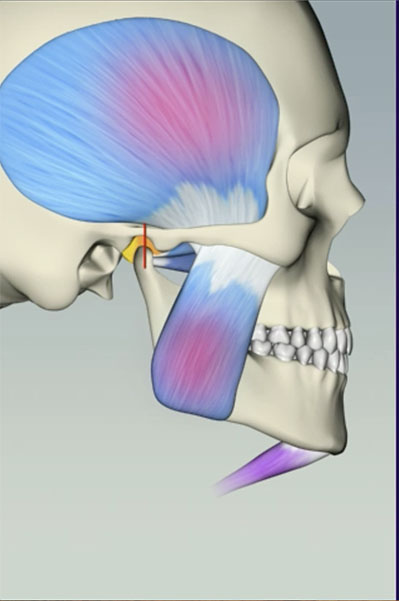
Single tooth dentistry vs. full mouth considerations
When we’re discussing single tooth dentistry versus comprehensive or full mouth dentistry, the first thing I think that needs to be determined is, can we treat this person with single tooth dentistry? If not, are they a specialty patient where we have to take more into consideration?
The differences between specialty and general patients.
 There are those patients who don’t show any signs of occlusal instability, and these patients can be treated with single tooth dentistry. But there’s also that large part of the population that shows signs of occlusal instability that we need to treat a little bit differently. When you’re just treating individual teeth in a high functional risk patient, you’re ignoring the foundation of the system, which is the TMJ’s, as well as the main driving force of that system, which is the muscles.
There are those patients who don’t show any signs of occlusal instability, and these patients can be treated with single tooth dentistry. But there’s also that large part of the population that shows signs of occlusal instability that we need to treat a little bit differently. When you’re just treating individual teeth in a high functional risk patient, you’re ignoring the foundation of the system, which is the TMJ’s, as well as the main driving force of that system, which is the muscles.
We always should aim to find out what the underlying cause of any problem is before we treat it.
Oftentimes, a patient will come into our office who has been caries free for a very long time, and all of a sudden, they have a bunch of carious lesions. In this instance, it is important to identify the reason for this sudden change. This is why I will ask questions such as, ‘Has anything in your hygiene changed? Has anything in your diet changed? Do you feel like you have a dry mouth?’ We discuss any medical or medication changes because we are trying to find out what contributed to the problem. So that way, once we treat it, we know how to prevent it from recurring again.
We should be treating occlusal issues just like we do bacterial issues, such as periodontal disease or cavities. Otherwise, we tend to just be putting out fires all the time.
Missing these specialty patients can put your reputation at stake.
 From a dentist’s perspective, if you have one of these patients where comprehensive dentistry is needed and it’s not recognized, you’re really putting your dentistry into a very unstable environment. If that dentistry starts to fail, oftentimes the patient loses trust and moves on to a different dentist. This is not only unfortunate for the dentist, but it’s a disservice to the patient, as well.
From a dentist’s perspective, if you have one of these patients where comprehensive dentistry is needed and it’s not recognized, you’re really putting your dentistry into a very unstable environment. If that dentistry starts to fail, oftentimes the patient loses trust and moves on to a different dentist. This is not only unfortunate for the dentist, but it’s a disservice to the patient, as well.
It also can be very frustrating to that dentist when they don’t understand why a patient continues to have sensitivity after a filling or a crown is placed, or they don’t understand why a crown repeatedly falls off, or crowns continue to fracture when they’re putting them into this unstable environment.
Tips for effectively treating the specialty patient:
- Do a complete exam, as taught by The Dawson Academy, to help identify occlusal instability
- If occlusal instability is identified, at the very least have a conversation with the patient so that they’re fully informed of their situation and can really make an informed choice of if they want to treat that occlusal instability or not.
- Follow the the 2D and 3D checklists and protocols to ensure you are not skipping any steps.









Leave a Reply
Want to join the discussion?Feel free to contribute!